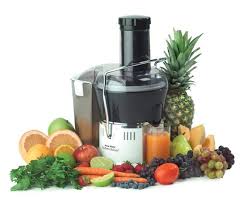Reasons for Healthy Juicing
There are three main reasons why you will want to consider incorporating vegetable juicing into your optimal health program:
Healthy Juicing assist in absorbing all the nutrients from the vegetables.
This is important because most of us have impaired digestion as a result of making less-than-optimal food choices over many years. This limits your body’s ability to absorb all the nutrients from the vegetables. Juicing will help to “pre-digest” them for you, so you will receive most of the nutrition, rather than having it go down the toilet.
Healthy Juicing allows you to consume vegetables in an efficient manner.
If you are a carb type, you should eat one pound of raw vegetables per 50 pounds of body weight per day. Some people may find eating that many vegetables difficult, but it can be easily accomplished with a quick glass of vegetable juice.
You can add a wider variety of vegetables in your diet
Many people eat the same vegetable salads every day. This violates the principle of regular food rotation and increases your chance of developing an allergy to a certain food. But with juicing, you can juice a wide variety of vegetables that you may not normally enjoy eating whole.
Many people initially think that juicing will be a real chore, but the majority are pleasantly surprised to find that it is much easier than they thought it would be.
It is Important to Listen to Your Body
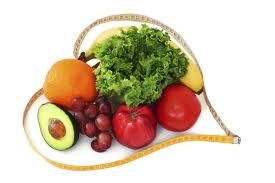 This is partly because you should only start by juicing vegetables that you enjoy eating non-juiced. The juice should taste pleasant — not make you feel nauseous.
This is partly because you should only start by juicing vegetables that you enjoy eating non-juiced. The juice should taste pleasant — not make you feel nauseous.
It is very important to listen to your body when juicing. Your stomach should feel good all morning long.
If it is churning or growling or generally making its presence known, you probably juiced something you should not be eating.
Here are a few simple lessons to get you up and juicing quickly:
Lesson 1: Use pesticide free veggies
It is wise to choose organic whenever possible. However, some vegetables are worse than others. Below are the vegetables that are the most pesticide loaded ones according to the Environmental Working Group.
So it would be wise to only purchase these vegetables if they are organically grown. The worst ones are listed first.
- Celery
- Spinach
- Kale
- Collard Greens
- Lettuce
- Carrots
- Cucumber (not as bad if you peel the skin)
Lesson 2: Get ready to juice!
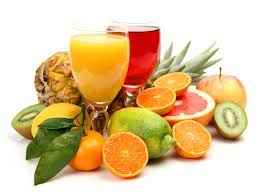 Please note that the order listed below is only intended for those that are new to juicing so you do have a pleasant experience with it. However, if you use ¼ to ½ lemon or lime to the juice you can start experimenting with the more bitter greens early on as the lemon and lime effectively counter their bitterness.
Please note that the order listed below is only intended for those that are new to juicing so you do have a pleasant experience with it. However, if you use ¼ to ½ lemon or lime to the juice you can start experimenting with the more bitter greens early on as the lemon and lime effectively counter their bitterness.
Please note it would be FAR better to use lemon or limes than carrots, beets or apples, which have far more fructose than lemons or limes.
Step 1: If you are new to juicing, I recommend starting out with these vegetables, as they are the easiest to digest and tolerate:
- Celery
- Fennel (anise)
- Cucumbers
These three aren’t as nutrient dense as the dark green vegetables. Once you get used to the 3 vegetables listed above, you can start adding the more nutritionally valuable, but less palatable, vegetables into your juice.
Step 2: When you’ve acclimatized yourself to juicing, you can start adding these vegetables:
- Red leaf lettuce
- Green Leaf lettuce
- Romaine lettuce
- Endive
- Escarole
- Spinach
Step 3: After you’re used to these, then go to the next step:
- Cabbage
- Chinese Cabbage
- Bok Choy
An interesting side note: Cabbage juice is one of the most healing nutrients for ulcer repair as it is a huge source of vitamin U.
Step 4: When you’re ready, move on to adding herbs to your juicing. Herbs also make wonderful combinations, and here are two that work exceptionally well:
- Parsley
- Cilantro
You need to be cautious with cilantro, as many cannot tolerate it well. If you are new to juicing, hold off on the cilantro. These are more challenging to consume, but they are highly beneficial.
Step 5: The last step: Only use one or two of these leaves, as they are very bitter:
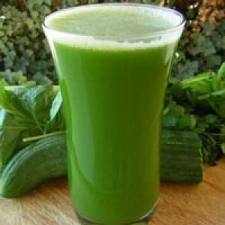 Kale
Kale- Collard Greens
- Dandelion Greens
- Mustard Greens (bitter)
When purchasing collard greens, find a store that sells the leaves still attached to the main stalk. If they are cut off, the vegetable rapidly loses many of its valuable nutrients.
Lesson 3: Make your juice taste great.
If you would like to make your juice taste a bit more palatable, especially in the beginning, you can add these elements:
- Lemons and Limes: You can also add a quarter to half a lemon a lime (leaving much of the white rind on).
- Cranberries: You can also add some cranberries if you enjoy them. Researchers have discovered that cranberries have five times the antioxidant content of broccoli, which means they may protect against cancer, stroke and heart disease. In addition, they are chock-full of phytonutrients, and can help women avoid urinary tract infections. Limit the cranberries to about 4 ounces per pint of juice.
- Fresh ginger: This is an excellent addition if you can tolerate it. It gives your juice a little “kick”! And, as an added boon, researchers have found that ginger can have dramatic effects on cardiovascular health, including preventing atherosclerosis, lowering cholesterol levels, and preventing the oxidation of low density lipoprotein (LDL).
Lesson 4: Drink your vegetable juice right away, or store it very carefully
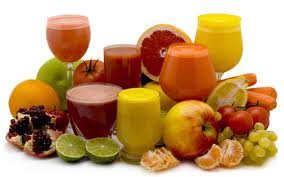 Healthy Juicing is a time-consuming process, so you’ll probably be thinking to yourself, “I wonder if I can juice first thing in the morning, and then drink it later?” This is not a good idea. Vegetable juice is HIGHLY perishable so it’s best to drink all of your juice immediately.
Healthy Juicing is a time-consuming process, so you’ll probably be thinking to yourself, “I wonder if I can juice first thing in the morning, and then drink it later?” This is not a good idea. Vegetable juice is HIGHLY perishable so it’s best to drink all of your juice immediately.
However, if you’re careful, you can store it for up to 24 hours with only moderate nutritional decline. This is really helpful if you are bringing your juice to work with you so you can consume it during the day.
How to store your juice:
- Put your juice in a glass jar with an airtight lid and fill it to the very top. There should be a minimum amount of air in the jar as the oxygen in air (air is about 20 percent oxygen) will “oxidize” and damage the juice.
- Purchase a food vacuum pump like Food Saver with a Ball jar attachment. You can pour your juice into a pint jar and put the lid on and use the Food Saver to suck out the air in the jar to vacuum pack it. This will remove most of the oxygen that will damage the juice.
- Immediately store it in the fridge and consume it when you are ready. It is best to drink it as soon as possible and in any case within 24 hours of juicing.
Most people juice in the morning, but if that does not work out well for your schedule, please feel free to choose whatever meal works best for your lifestyle.
Lesson 5: Clean your juicer properly
We all know that if a juicer takes longer than 10 minutes to clean, we’ll find excuses not to juice at all. I find that using an old toothbrush works well to clean any metal grater. If you buy a high-quality juicer, the whole process should only take about 5 minutes.
Whatever you do, you need to clean your juicer immediately after you juice to prevent any remnants from contaminating the juicer with mold growth.
My favorite Juicer is the Breville. It is amazing! It is quiet and you can put a whole cucumber through it without having to cut it into small pieces. It has a large pitcher that holds the juice and a large container in the back for pulp. The pulp is very dry. I purchased mine at Bed Bath and Beyond for less than $150.00 and put my expensive twin green juicer ($500.00) in the cabinet.

